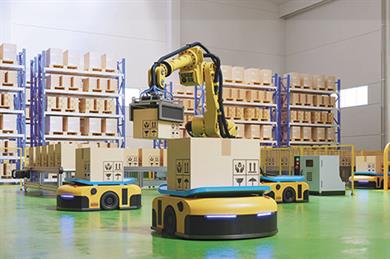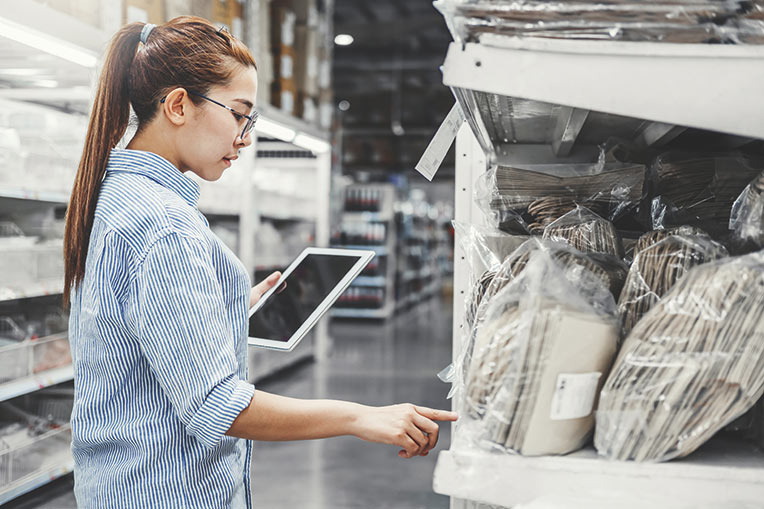 T
The logistics industry is a cornerstone of Singapore’s economy, contributing about $7 billion in VA (Value Added) in 2018, with nearly 10 percent of the total workforce employed in this sector.
In order to retain its position as one of the top logistics hubs, Singapore recognises the importance of transforming the logistics industry. To adapt to challenges facing this sector and to ‘move’ with changing markets, Singapore recognises the need of the times is digitalisation.
Introducing the Logistics Industry Digital Plans (IDP) for Singaporean SMEs
Back in 2016, the Logistics Industry Transformation Map (ITM) was launched to catalyse enterprise level efforts to transform and grow the industry through productivity, innovation and developing local talent.
The Logistics IDP for Small and Medium Enterprises (SMEs) was then developed by the Infocomm Media Development Authority (IMDA) with support from the Singapore Economic Development Board (EDB) and SPRING Singapore, as part of ongoing ITM strategic plans to help local logistics companies to adopt more digital technologies to drive innovation and improve productivity.
The Logistics IDP serves as a guide for local SMEs in the logistics industry as they work to digitalise their businesses, plug skills gaps and participate in industry pilot projects.
What is in the Logistics IDP for SMEs
The Logistics IDP comprises:
• An industry digital guide to assess a local logistics company’s position on the road to digitalisation.
• Access to a list of pre-approved digital solutions such as customer management or data analytics on Tech Depot, a one-stop platform for tech solutions and assistance channels.
• Collaborative projects (co-created by IMDA and industry leaders) and national initiatives that would benefit the logistics industry. These include in-mall distribution, federated lockers and the National Trade Platform.*
• Skills framework to enhance the digital skills of employees.
* Among the first projects that was highlighted under the IDP is a tripartite partnership between the IMDA and VCargo Cloud, together with Bollore Logistics (Singapore), Dimerco Express Singapore and LCH Lockton, to make use of digital technology to improve efficiency.
The industry digital guide acts as a roadmap that will provide support to SMEs on their digitalisation journey across three stages:
1) getting the digital economy ready, 2) growing in the digital economy, and 3) leaping ahead.
Stage 1: Getting the Digital Economy Ready
The first stage identifies ready-to-go digital solutions to help SMEs in the logistics industry to streamline their business processes and boost efficiency. Integrated solutions will help digitalise business operations while optimising existing resources.
Logistics solutions include:
• Integration of freight management
Tools that will digitise the data from freight forwarding operations related to shipments made by air, water, or land for import and export. This will enable companies to handle an increased number of transactions and help them to respond to changes in business by reuse of data related to shipment and trade.
• Integration and optimisation of fleet
Solutions that enable the tracking of fleet in real-time, to help in monitoring and optimal allocation of fleet.
• Management of driver behaviour
The use of video recordings and sensors for recording data of driving patterns to improve safety while driving, resulting in fewer accidents and reducing insurance costs.
• Optimisation of routes
Tools that are able to analyse toll charges, conditions of traffic, load capacity of vehicles and use these insights to direct transport vehicles to the best possible routes. The benefits of this include reduction of operating overheads and optimum use of assets due to decreased distance traveled and lesser time between stops.
• Management of warehouse and inventory
Tools that will enable the tracking of stock levels, locations and movement, and the availability of warehouse space in real-time. This will ensure optimum use of space, resources and assets, and prevent losses arising due to wastage created by product expiry or excessive stocking.
Stage 2: Growing in the Digital Economy
The second stage provides more advanced digital solutions that companies could leverage to digitally connect with business partners within the industry’s ecosystem, to improve business collaborations and allow for more comprehensive service offerings through resource and demand aggregation.
The service offerings include:
• B2B e-payment
The use of e-payment for transactions which will help to avoid unnecessary time and resources spent on activities related to cash and cheque transactions. This will enable quick updates of all financial dealings and ensure better flow of cash due to speedy settlements.
• Integrity management of supply chain
The use of sensors to check and gather information on the environment while goods are being moved, to aid in the transportation of goods that are perishable or dangerous.
• Federated lockers network integration
The utilisation of open access Federated Lockers network to meet the increasing needs of e-commerce. This will help to avoid traffic congestion during peak hours and optimise the use of resources.
• Digital economy platforms
* In-mall distribution channels that utilise the in-mall distribution services for goods and/or products, to maximise the last mile delivery to malls. This will help companies to be more productive with decreased turnaround time for trucks undertaking deliveries into malls.
* Resource aggregation platforms that can help in the collection and sharing of resources such as workforce, fleet, or cargo space.
* B2B Trade facilitation platforms that will enable the electronic flowing of data among trade partners and their related agencies during international import/export shipments and declarations. The improved flow of data and trade processes will help businesses to be more efficient, resulting in less reliance on the workforce and fewer mistakes during data entry.
Stage 3: Leaping Ahead
The third stage outlines digital solutions that maximise a company’s resource value with advanced automation technologies. This involves harnessing information from aggregated data and making more well-informed business decisions.
Advanced automation technologies include:
• Automated warehouse operations
The utilisation of robotics, sensors and Automated Storage and Retrieval Systems (ASRS) for automating the processes in warehouses. This will enable the maximum utilisation of warehouses and reduce the reliance on employees for warehouse functions, significantly improving storage/retrieval functions and allowing warehousing operations to be carried out 24/7.
• Automated guided vehicles
The use of computer-guided vehicles to move goods between specified areas. This will lead to less reliance on people and significantly reduce the possibility of accidents due to human error. It also dismisses the need for ‘holding areas’ while moving goods to particular regions.
• Predictive distribution management
This enables the analysis of collected data for efficient planning and business operations. It will help in the optimum use of resources because of planned and well-informed decisions. It will lessen the lead times for fulfilment and decrease the interruptions in the stock supply. There will also be lesser holding costs on account of improper stocking decisions or stock expiry.
To plug the skills gap in digital transformation, companies and individuals can take reference from the Skills Framework for Logistics, which identifies a spectrum of skillsets, career pathways and job roles to build up a digital workforce. Businesses can also tap on Workforce Singapore (WSG) Adapt and Grow initiatives such as the Professional Conversion Programmes (PCP) to support their transformation journey.
Support will be provided at each stage of digitalisation. SMEs can either self-assess using a self-assessment checklist or get in touch with the business advisors at the SME centres.
